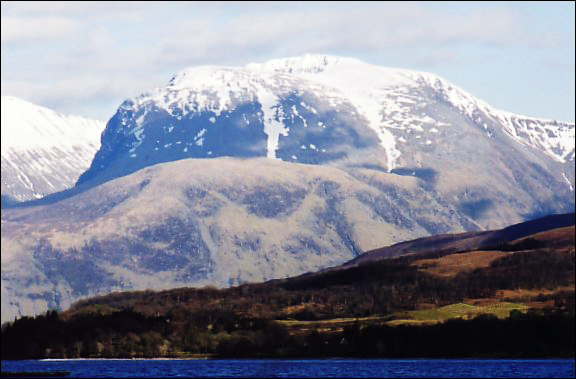The Queen of Winterby Tom Doran Scotland has always had volatile weather – mainly rain and storms – some of it changing hour by hour. One of the sayings, usually attributed to Scotland and Ireland is: “Don't like the weather? Wait a minute.” And frankly, there's a lot of truth in that statement.  by Tom Doran Every culture adapts to their native environment, and though some may tire of the wet, they do understand it. The Celts had celebrations (as did many other cultures) highlighting the coming and going of winter – and of spring. As Scotland currently is getting pelted by abnormally heavy amounts of rain and snow and wind, perhaps they should try to appeal to the ancient Celtic Goddess who might be responsible. Cailleach Bhéara or Beira can be credited – or blamed. She is the Goddess of all gods in Scots mythology and responsible for the formations of many of the mountains in the Highlands. Her mighty throne is in fact the highest mountain in Scotland (and all of Britain) – Ben Nevis.  ben nevis A dreadful, one-eyed hag, she had a colossal, magic hammer, with which she battered the landscape into mountains and glens and lochs all over the Highlands. Her powers were so fierce that even the Corryvreckan whirlpool was associated with her reign – which always ended on the longest day of the year. There are many areas of Scotland where strange rock formations and terrible weather is still to this day associated with her. So, with the dramatic winter weather that is descending on Scotland at the moment, we know where to direct our wrath – and it's not on the poor weatherman/woman on the local TV.
St. Andrew’s Day Film FestivalFrom noon until 6:00pm the Saltire Society of New York and the Film department of Brooklyn College celebrated St. Andrew’s Day with the showing and a discussion of two films about Scotland: the musical Brigadoon and The Prime of Miss Jean Brodie with its academy award nominated song, “Jean” (although it won the Golden Globe award for best song). Brigadoon opened in 1947 as a Broadway show with its Lerner and Lowe score and Agnes de Mille choreography. Seven years later the filmed version appeared with choreography by Gene Kelly. The discussion pointed out that the film is generally well liked by Scottish Americans, whereas many Scots regard it somewhat differently. (“It’s a hoot” was one comment while another claimed to have “had the misfortune of seeing Brigadoon a few years ago and am nauseous at the thought”. The discussion revolved around the problems with the play and why so many Scots dislike it or regard it as just plain “silly”. The discussion revolved around historical situation in 1747 when the village was made to vanish because of the fear of witches. 1747 would have been right after the Jacobite rising and tartans, kilts, bagpipes had all been outlawed. There hadn’t been any witch trials in almost a quarter of a century. The town of Brigadon in 1747 would have been far more preoccupied with these things than witchcraft. Links were made between parts of the story and Robert Burns’ “Tam O’Shanter” in which Tam flees a spirit known as Cutty Sark by crossing a bridge over flowing water of the Doon (Brigadoon) which the spirit cannot cross. The idea that the townspeople of Brigadoon cannot cross the bridge out of Brigadoon without ending their existence seems related to the idea in Tam O’Shanter In the other hand The Prime of Miss Jean Brodie based on the novel by Scottish writer Muriel Spark is seen by many Scots as “a good story and a good film” and “a masterpiece” by many others. Like Brigadoon, The Prime of Miss Jean Brodie had been a play before it was made into a film Set in Edinburgh just before the start of WWII, the film captures the time and place, and with Maggie Smith who also won the academy award for best actress, the film is pure gold. The film is set largely in Marcia Blaine, a conservative all-girls school (the film uses James Gillespie's school which had been called Edinburgh Academy). Attending the event were members of the Saltire Society of New York’s board of directors, Tom Doran, Bruce MacIntyre and John Beatty. Also present was Cecilia Cosentini from the Scotia News. As an added attraction Mr. Jim Tough from the Saltire Society’s main office in Edinburgh was also present. Tweetscollected by ceciliaPinterest Board |